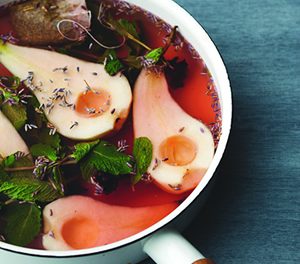For many years, research found that one person in each family called the Gatekeeper controls the majority of food purchased and eaten by all family members. Now some question whether cultural changes are removing gatekeepers� power. This is a particularly important question for parents who wonder how much impact they have on their children�s nutrition and health.
The concept of nutritional gatekeepers began with World War II-era studies. Research found that the meal planner and grocery shopper of the family generally controlled what the family ate. At that time, husbands and children said they believed the wives/mother had the greatest influence on family eating habits.
Some marketing analysts contend that gatekeepers� influence is waning. Advertisements increasingly target children. Children have greater access to food outside the home. Also, as children get older, they make more food choices independent of parents, often with their own money. Marketing research reveals that the primary concerns for children and adolescents in choosing foods are taste, convenience and price. Health consequences of the food are usually given much less emphasis.
Brian Wansink, a professor of consumer behavior at Cornell University, contends that parents are still gatekeepers and can often do more to promote healthful family eating than they realize. In today�s world, women may not always be the gatekeepers. According to Wansink, 92 percent of the time there is still one person young or old, male or female who purchases and serves the majority of food.
In three different surveys, Wansink asked a total of more than 1,700 parents about how much influence they had over their children�s eating. He found that parents believed there was a gatekeeper that controlled, on average, 72 percent of the food their children ate.
How can today�s gatekeepers more fully use their position? One step is to focus on family dinners. Studies consistently show family dinners include more fruits, vegetables, fiber and vitamins, and less fried food, soft drinks and saturated fat than when kids eat on their own. With just a bit of advance planning, healthful meals can be made in little time.
Gatekeepers also affect eating habits by controlling the accessibility of healthful foods. Research has found that accessibility is an especially strong influence on how much fruits and vegetables family members eat.
When gatekeepers keep a variety of fruits and vegetables in visible spots on the counter or in the refrigerator, people tend to eat more. Prepared fruits and vegetables, washed and/or sliced, also increase the chances children will eat them. Gatekeepers can store candy or unhealthful snack foods in places where they are less likely to be seen than on counters. They also can choose how quickly to replenish "treats," such as ice cream or chips.
Studies cited in a 2006 National Academies of Science report on food marketing to youth show children influencing 47 to 75 percent of dessert, breakfast food, snack and soft drink purchases. The report found that the number and types of foods kids request has grown over the years. Gatekeepers can retain control by offering children a choice of two or three acceptable options, rather than an open-ended "What do you want?"
Many people including some adults are convinced that food that is good for you can�t taste good. Wansink suggests this motto for gatekeepers: "Make it healthy, but don�t call it healthy."
AICR










